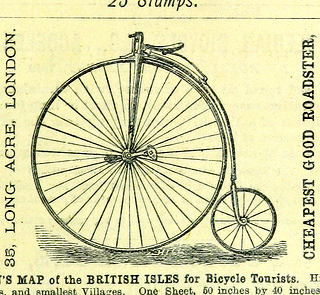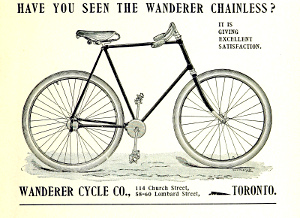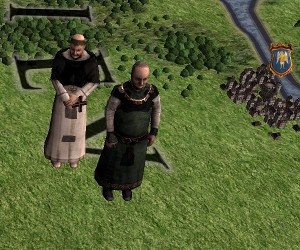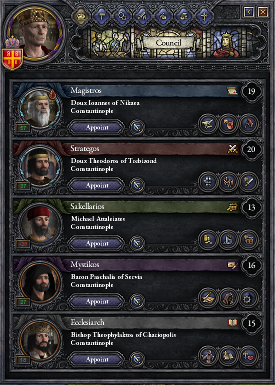Technological development influences the way we live and interact with the world on a deep level. Technological artifacts like computers and cars dictate how our society functions and how we relate to one another. These influences are so pervasive throughout our everyday lives that it’s sometimes difficult to imagine things being any other way. Technology is seen as an inevitable, ever-advancing part of our world. We see it as almost a force of nature.

This deterministic outlook can be see in the way we represent technology in videogames. As I’ve discussed in some previous posts, the tech tree represents a very deterministic way of understanding technological development. Technologies are always out there, waiting to be discovered. It’s not a matter of if your civilization will develop steel, it’s merely a question of when. Some games, like Master of Orion, subvert many deterministic assumptions by providing a more complex understanding of technological development. While more nuanced in its models than many other games, Master of Orion does not entirely escape deterministic thinking. Scientific progress, which is powered by industrialism, continues to be the primary driving force in the game, strengthening the player militarily and enabling her to reach ever more distant planets. While the game does deal with issues of ecology and pollution, such problems are portrayed as purely technical problems, rather than social issues. Every problem in the game has a technological solution.
In technology studies, there was eventually a reaction against deterministic theories of technological development. A number of scholars who had come from the field of science studies began applying the approaches that they had used to study scientists working in the lab to the engineers and inventors who created new technological artifacts. The result was an approach that looked at the social forces that shaped the way technology was developed. This new theory, called the Social Construction of Technology (or simply SCOT), would profoundly influence the way that we understand our relationship with technology.

One of the classic examples of how social forces shape technology is Trevor Pinch and Wiebe Bijker’s (1987) analysis of the development of the modern bicycle. As many people know, the bicycle changed substantially during the 19th century. The unwieldy penny-farthing bicycles eventually gave way to the more familiar chain-driven rubber-tired devices that we still use today. Most often, we frame this transformation as a simple narrative of progress – an inferior design was eventually replaced with a safer, more efficient design that was simply better. In actuality, this is far from the case.
As Pinch and Bijker note, the development of the bicycle was not a linear genealogy of incremental improvements. Rather, it was an explosion of differing and often contradictory ideas. While most people agreed that there were problems with the ordinary penny farthing bicycle, there was no consensus on how to fix these problems, or even what the problems were. Many groups, for example, resisted the use of pneumatic tires. Although having air-filled tires made bike riding more comfortable, especially over terrain like cobblestone, they also required considerable maintenance and were prone to slipping in mud. Some groups disliked them simply because they were ugly. As different social groups identified different problems and solutions, a huge variety of bicycles emerged, many quite different from what we see today.

In the end, the modern bicycle didn’t necessarily win out because it was objectively better, but simply because many relevant social groups came to accept it. Problems like slipping in the mud and requiring extra maintenance were never solved per se, rather, people eventually decided that these problems weren’t really problems. Pneumatic tires still require inflating and patching, but we’ve come to see this as simply part of riding a bike, rather than a flaw in the overall design of the bicycle. Thus, the bicycle is not the product of some deterministic march of progress, but one solution out of many that triumphed not because of its inherent superiority over other designs, but because it ultimately matched up with the needs of society.
As influential as the Social Construction of Technology has been in the field of Technology Studies, this influence hasn’t extended to videogame design. This isn’t terribly surprising, considering how pervasive technological determinism is in society in general and in the tech world in particular. Deterministic models of technology are also easier to design. It’s easy to create a tree of inevitable advances for the player to unlock. It’s much harder to design a system where technological choices are shaped by the whims of society.
Although including societal forces in such a system is complicated, it’s not impossible. One of the more innovative games in this aspect is Crusader Kings II. The game is set in Europe in the middle ages and was designed with great attention to historical accuracy. Unlike most strategy games, scientific achievements in Crusader Kings II are not treated as sweeping cultural events that change the player’s entire empire. Instead, science is implemented geographically, with certain provinces developing new ideas and techniques which slowly spread to other nearby areas. For example, one province may develop a more powerful bow while another may improve farming methods. Even if these provinces change hands between different players, the situated technoscientific knowledge remains.

While the player is occasionally allowed to directly influence what technologies develop in a given province, the more common way to improve your technology is through indirect means. The player can encourage the development and spread of ideas within her realm by dispatching members of her court to intervene in some capacity. This can range from the Treasurer being ordered to assist with the development of economics to the Spymaster being sent to neighboring kingdoms to increase the chances of technology spreading to the player’s lands. The success or failure of these missions depends primarily on the skills and traits of the noble appointed to the post. In stark contrast to most games, which portray technoscientific development as a purely material undertaking, operationalized as a function of resources spent over time, Crusader Kings II portrays it as being a primarily social process.

So how did Crusader Kings develop such a uniquely social model of technology? First, it differs from other medieval strategy games by placing a greater emphasis on politics and interpersonal relations. In games like Age of Empires or Total War, military power is the key to victory. There are some non-military units and structures like trade carts and universities, but these exist primarily to support the player’s military. Combat units are still important in Crusader Kings, but warfare tends to be less important than forming alliances, arranging marriages, and providing a strong line of succession for your dynasty. As such, the importance of the social is apparent not only in the development of technology, but in many aspects of history.
The representation of technology in Crusader Kings is also influenced by its specific timeframe in history. Since the game spans at most from the years 867 to 1453, there is never a railroad, nor telegraph for disseminating ideas. There isn’t even the efficiency of the Roman Empire’s infrastructure to spread ideas. I was able to speak with Henrik Fahraeus, the lead designer on Crusader Kings II, who described their design choices as such:
While it may seem strange, many advances took centuries to spread across the continent rather than the decades you would expect. Also, it was almost unheard of for rulers to fund scientific or technological research (especially in the West.) It was more that a clever blacksmith came up with an improved plow on his own and the idea slowly spread, etc.
Although the relevance of social forces to technological development is no less today in the age of the Internet than it was in the middle ages, this slow spread of ideas and information makes it easier to see the social forces at play.
The technology mechanics in Crusader Kings II are certainly not a perfect representation of the Social Construction of Technology, nor were they intended to be. As I mentioned earlier, the focus of the game is on the interaction between noble houses and the politics of creating a lasting dynasty. Although the technology system is very innovative, it is also quite abstract. There are eighteen different technologies, each of which follows a linear path of advancement. Although this development is shaped by social forces, there is no means for representing the kind of alternate technological solutions that we see in the development of the bicycle. That said, Crusader Kings manages to escape the ubiquitous shadow of technological determinism in a way that few other games have managed to do.

Crusader Kings’ tech tree taught me a great lesson about medieval history, albeit indirectly. There are 18 possible technologies, but by far the most effective is the one that develops your personal bodyguard into a standing army. You can see firsthand how your army spends money like water, and how crushing an advantage you receive from having trained soldiers at the border on day one, instead of spending two months mustering the army. Similarly, the best cultural advancements are the ones that centralize your government and ensure a smooth transition between rulers. It really hammers home the unsustainable nature of the feudal system and the rise of the nation-state.